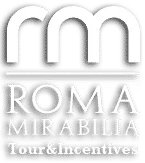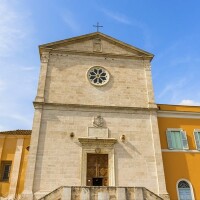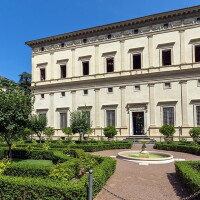Raphael was the most influential painter of the 16th century in Rome. With his arrival in Rome in 1508 Raphael set a crucial turn in Roman painting, although this was only evident many years after his early death in 1520. Among his frescoes in the Papal private rooms in the Vatican, the frescoes in the Villa Farnesina (on the banks of the River Tiber) represent his most important work in Rome. It was here, on behalf of the rich banker Agostino Chigi that the artist realized the beautiful cycle of Cupid and Psyche and the story of Galatea. Of great interest too are the wall paintings by Sebastiano del Piombo, Sodoma and Baldassare Peruzzi, who was also the villa’s architect. On the opposite bank of the river we then walk along to the picturesque Via Giulia, which was laid out by Bramante for Pope Julius II. Della Rovere, at the beginning of the 16th century. Lined with aristocratic palaces dating from the 16th to 18th centuries, as well as fine churches and antique shops, Via Giulia is among the most beautiful streets in Rome. Among his projects for the New St. Peter’s, Bramante realized one of the masterpieces of the Italian Renaissance in Rome, the so-called “Tempietto”, constructed on the site of the legendary martyrdom of the apostle Peter. Beside the Tempietto stands the church S. Pietro in Montorio with important its paintings by Renaissance artists, including Daniele da Volterra, Sebastiano del Piombo and Giorgio Vasari. At the end of our tour we walk up to the nearby Gianicolo hill, from which you can enjoy a wonderful panoramic view of the city.












